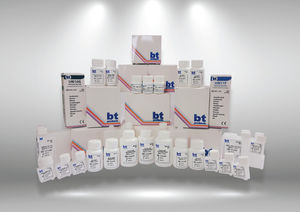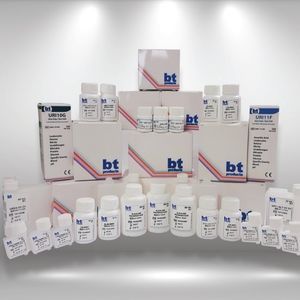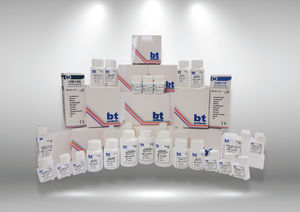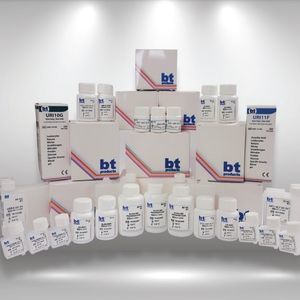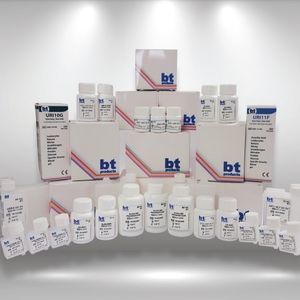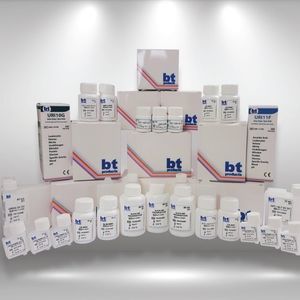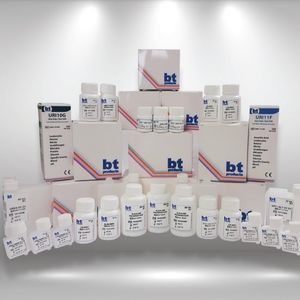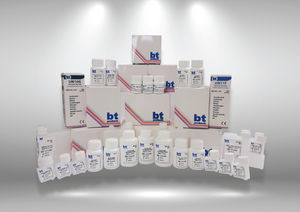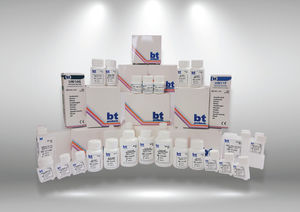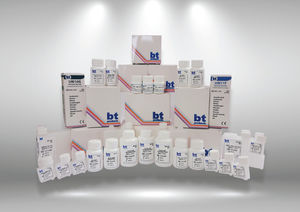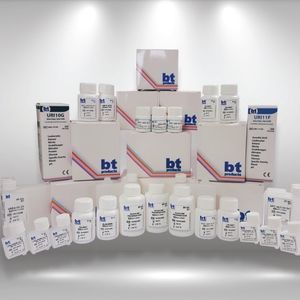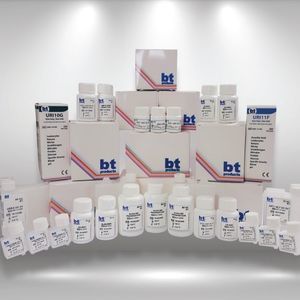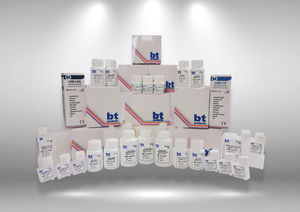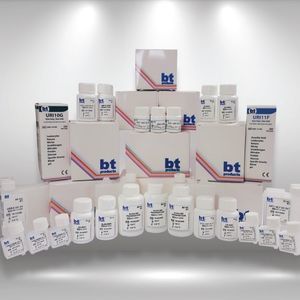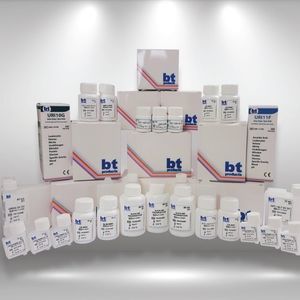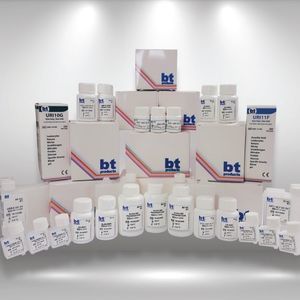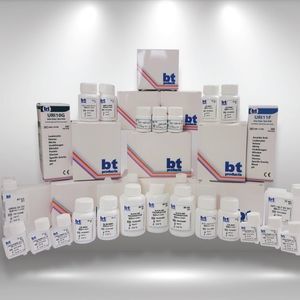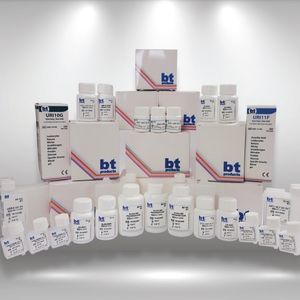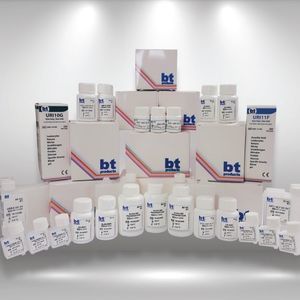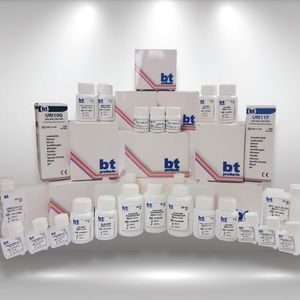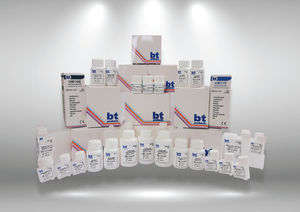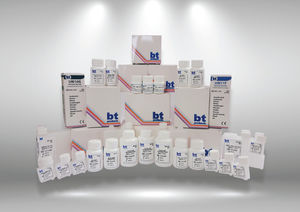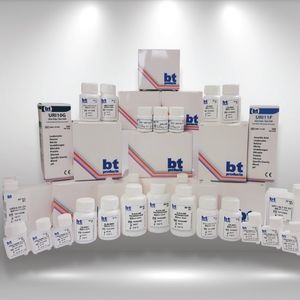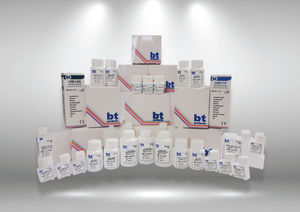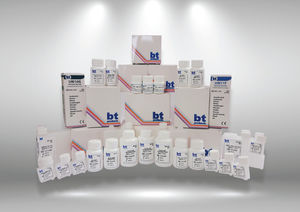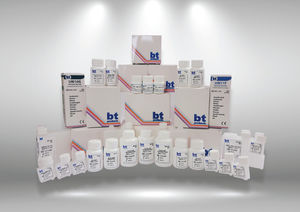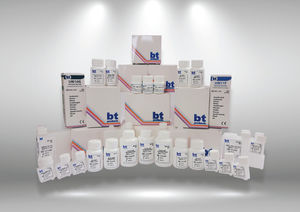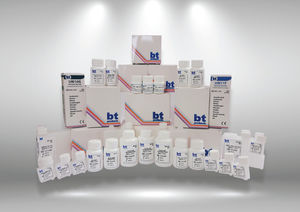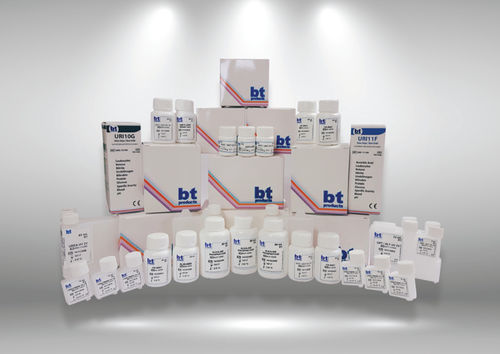
- Laboratory
- Laboratory medicine
- Solution reagent
- BILIMSEL TIBBI ÜRÜNLER
Phosphorus reagent kit PHO-10 seriessolutiondiagnosticfor biochemistry
Add to favorites
Compare this product
fo_shop_gate_exact_title
Characteristics
- Type
- solution
- Applications
- diagnostic, for biochemistry
- Tested parameter
- chloride, phosphorus, ascorbic acid, molybdenum
- Storage temperature
Max.: 25 °C
(77 °F)Min.: 2 °C
(36 °F)
Description
For the in vitro quantitative determination of Inorganic Phosphorus in serum.
METHODOLOGY
The measurement of Inorganic phosphorus in serum is usually accomplished by forming a phosphomolybdate complex and in turn reducing it to a molybdenum blue color complex. Methods differ as to the choice of reducing agents: stannous chloride, phenylhydrazine, aminonaphtholsulfonic acld, ascorbic acid, pmethylaminophenolsulfate, N-phenyl-p-phenylenediamine and ferrous sulfate. These methods suffered from color instability, deproteinization steps and complexity of performance. The addition of a surfactant eliminated the need to prepare a protein-free filtrate, accelerated color production, stabilized the color and simplified the procedure. Many of the components in these reagents were unstable and had to be stored separately. The quantitative measurement of unreduced phosphomolybdate complexes was first reported by Simonsen in 1946. Daly and Ertingshausen adapted that technique for the determination of Inorganic phosphorus in 1972. Amador and Urban modified this procedure further the same year. The present method is a modification of the above procedure using a single, stable reagent performing in the UV range.
Principle
Inorganic Phosphorus + H2S04 + Ammonium Molybdate Unreduced Phosphomolybdate Complex.
Inorganic phosphorus reacts with ammonium molybdate in an acid medium to form a phosphomolybdate complex which absorbs light at 340 nm. The absorbance at this wavelength is directly proportional to the amount of inorganic phosphorus present in the sample.
Precautions
1. This reagent is for in vitro diagnostic use only.
Catalogs
No catalogs are available for this product.
See all of BILIMSEL TIBBI ÜRÜNLER‘s catalogsOther BILIMSEL TIBBI ÜRÜNLER products
Universal Bottled Clinical Chemistry Reagents
Related Searches
- Solution reagent kit
- Diagnostic reagent kit
- Laboratory reagent kit
- Protein reagent kit
- Enzyme reagent kit
- Histology reagent kit
- Dye reagent
- Buffer solution reagent kit
- Clinical chemistry reagent
- Antibody
- Clinical chemistry analyzer
- Quality control reagent kit
- Automatic clinical chemistry analyzer
- Clinical reagent kit
- Virus reagent kit
- Benchtop clinical chemistry analyzer
- Test strip
- Tissue reagent kit
- Electrolyte reagent kit
- Colorimetric reagent kit
*Prices are pre-tax. They exclude delivery charges and customs duties and do not include additional charges for installation or activation options. Prices are indicative only and may vary by country, with changes to the cost of raw materials and exchange rates.



